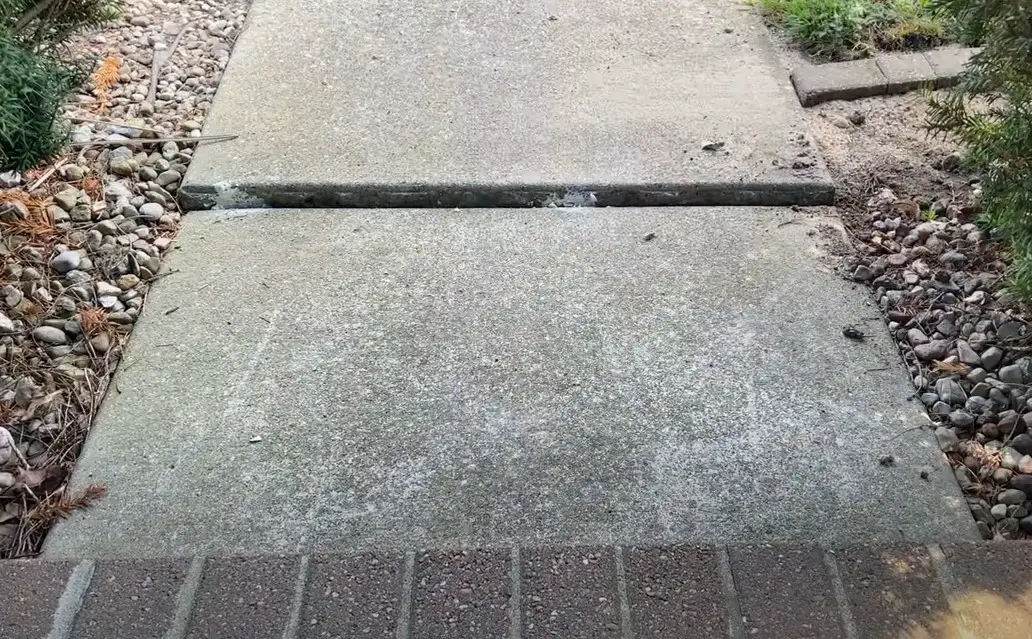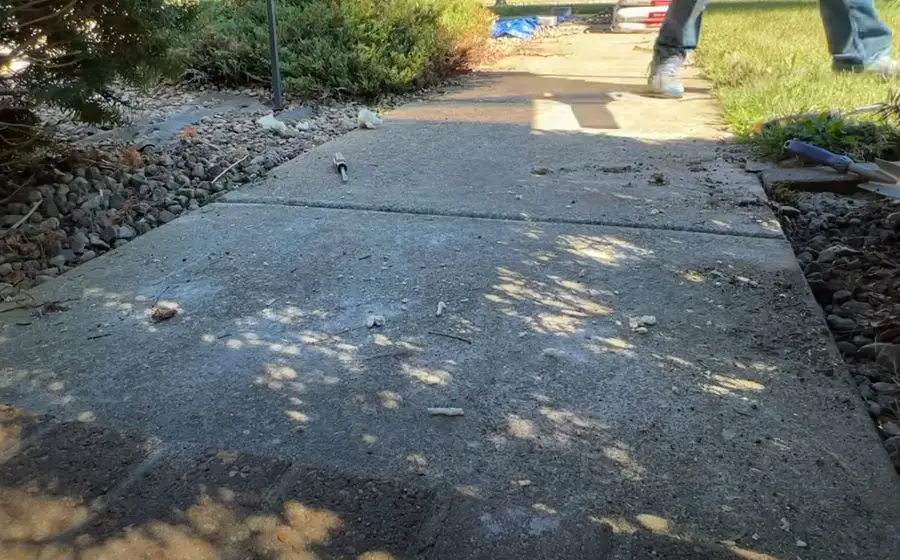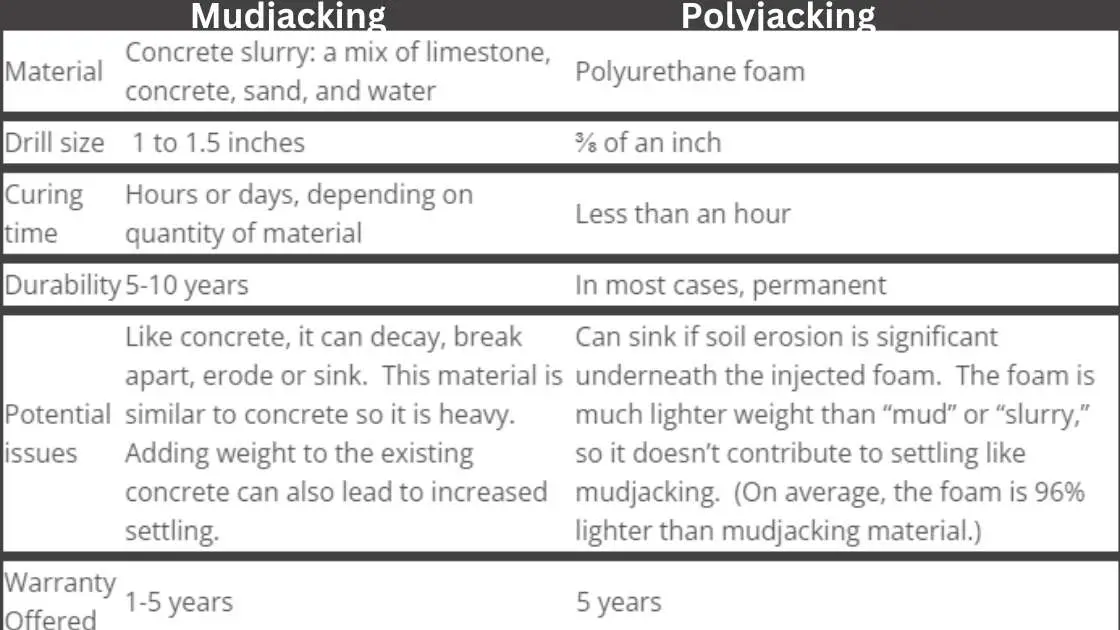Concrete Lifting: Cost-Effective Solutions to Fix Sunken Concrete


If you're dealing with sunken or uneven concrete surfaces, concrete lifting may be the solution you've been searching for.
This cost-effective and efficient method can help you avoid the expense and inconvenience of replacing your entire concrete slab.
By raising your concrete back to its original level, concrete lifting can improve the safety, functionality, and appearance of your driveway, patio, sidewalk, or other concrete surface.
In this article, we'll explain the basics of concrete lifting, including the methods used, the benefits, and the factors that can affect the cost and effectiveness of the process.
The benefits of concrete lifting or slab jacking are:
The major benefits of concrete lifting or slab jacking are:
- Cost-effectiveness: Concrete lifting is typically much less expensive than the cost of replacing an entire concrete slab.
- Time-saving: The process of lifting a sunken slab can be completed in a matter of hours, allowing you to quickly resume normal use of your concrete surface.
- Minimal disruption: Concrete lifting involves drilling small holes in the concrete, rather than tearing up and removing the existing slab, which means less mess and disruption to your property.
- Durability: The materials used for concrete lifting are typically long-lasting and resistant to moisture, which can help prevent future settling or sinking.
- Improved safety: A level concrete surface can help prevent tripping hazards, reduce the risk of damage to vehicles and equipment, and ensure better drainage to prevent standing water and ice buildup.
- Enhanced aesthetics: Lifting sunken concrete can restore the appearance of your property, improving curb appeal and property value.
how much does it cost to lift a concrete slab?
The cost of concrete lifting can vary depending on several factors, including the size of the project, the method used, the location of the project, and the extent of the damage.
However, in general, concrete lifting is typically less expensive than the cost of replacing an entire concrete slab.
According to industry estimates, the cost of raising and leveling concrete can range from $5 to $25 per square foot.
For example, a typical 10' x 10' concrete slab may cost around $500-$2,500 to lift and level.
However, the cost can be higher for more complex projects, such as those involving hard-to-reach or heavily cracked slabs.
The method used for concrete lifting can also impact the cost. Mudjacking, a traditional method that involves pumping a slurry mixture beneath the slab to lift it, may be less expensive than newer methods such as polyurethane foam injection, which can be more precise but also more costly.
Here are some past examples of what a concrete lifting contractor has charged:
The cost to raise a driveway that has settled or sunk by 2 inches along the garage floor is usually around $800-$1200 for two sections that are each 10 feet by 10 feet.
Raising a patio that has sunk by 2 inches along the foundation of the house typically costs around $850-$1200 for three sections that are each 8 feet by 8 feet.
It's also common for walkways to settle a bit, and raising 3-4 sections of a walkway that leads to the front door by 2-3 inches would typically cost around $500-$750.
Another way to estimate the cost is to say that each section of driveway or patio (assuming they're no more than 10 feet by 10 feet) costs around $150-$250 per inch needed to lift it.
Keep in mind that these are just general examples, and the cost can vary depending on many factors.
What causes concrete to sink or settle?
The most common reasons why concrete settles or becomes uneven:
- Soil erosion or poor compaction during construction
- Changes in moisture levels in the soil due to weather, plumbing leaks, or poor drainage
- Shifting or settling of the foundation or soil beneath the concrete
- Heavy loads or traffic that exceed the weight limit of the concrete
- Aging or deterioration of the concrete due to wear and tear or exposure to the elements
- Expansive soil - If the soil under the concrete is clay, it tends to expand when it gets
wet and shrink when it dries out. This causes the soil to move but also reduces its ability to withstand the weight of the concrete. - Poor quality materials or workmanship during construction.
These factors can cause the concrete to sink, settle, crack, or become uneven, which can be a safety hazard and detract from the appearance and functionality of the concrete surface.
how you avoid the problem of a sinking concrete slab
To avoid concrete settling or sinking in the first place, you can take the following steps:
- Ensure proper site preparation: Proper site preparation, including adequate compaction of the soil and appropriate drainage, can help prevent settling or sinking of the concrete.
- Use quality materials: Use high-quality concrete mix, reinforcing materials, and other components during the construction process.
- Control moisture levels: Properly grade the surrounding soil to prevent water from pooling around the concrete and causing erosion or settling.
- Control loads: Ensure that the weight of any equipment, vehicles, or structures placed on the concrete does not exceed the weight limit for the specific type of concrete.
- Regular maintenance: Regularly inspect the concrete surface for signs of cracking, settling, or other damage, and address any issues promptly to prevent further damage.
- Hire experienced contractors: Hire experienced and reputable contractors with a history of successful concrete installation to ensure that the project is done correctly from the outset.
what are the methods used for concrete lifting?
Concrete lifting, also called slabjacking, is a type of concrete lifting or leveling in which
small holes are drilled through the affected slab.
Afterwards, a slurry or foam is then injected under the slab to lift it back to its original position.
There are two types of slabjacking: mudjacking and polyjacking.
Method 1: Mudjacking
This involves injecting cement slurry, which is basically a mixture of water, soil, and
Portland cement, under the subsided slab to bring it back into position.
This process usually takes between one and 24 hours to complete, depending on the size of the
repair.
How to mudjack your concrete slab:
- Drill several holes in the sinking concrete slab, each about two inches in diameter and spaced about one to four feet apart. Note that the number of holes you drill will depend on the extent of the concrete problem.
- Inject the prepared cement slurry into each hole using a hydraulic pump. In the process, the slurry penetrates directly under the concrete, fills the void that caused the sinking and lifts the concrete back into place. During this step, it is important to monitor the amount of slurry injected into the slab so that each part comes out as evenly as expected.
- Clean the patches of mud mixture around the drilled holes and seal them with new concrete.
Pros of mudjacking:
- The whole process is much cheaper, faster, quieter, and less invasive than a complete replacement of concrete
- It does not require complex equipment or a large crew
- Since the slurry is a mixture of Portland cement, water, and sand, mudjacking is an environmentally friendly solution
Cons of mudjacking:
- If the slab had sunk because the soil was too weak to support it, the concrete slurry, which is naturally very heavy, would only exacerbate the problem. In time, there will be another settling problem that could be similar to the previous one
- It does not repair concrete cracks. You have to fix those separately
- The large holes drilled during the process can affect the appearance of the concrete and even pose a risk of cracks in the future
Method 2: Polyjacking
This is similar to mudjacking, but in this case, Polyurethane foam is injected into your
slab instead of cement slurry. This process can be completed in as little as 15 minutes.
How to polyjack your concrete slab:
- Drill small strategically-placed holes, each about 5/8 inch in diameter, in the slab.
- Pump the polyurethane foam into the holes as a liquid. It will expand and solidify in a few seconds.
- Fill the holes, and your concrete slab will be ready for use again in about 15 minutes.
Pros of Polyjacking:
- It is easy, very fast, and minimally-invasive
- Like the slurry in Mudjacking, polyurethane foam is also eco-friendly
- Unlike the heavy cement slurry used in mudjacking, polyurethane foam is extremely lightweight and does not cause the soil under the slab to sink further
- After the procedure, the concrete looks neater as there were smaller holes drilled
- The larger the holes, the greater the risk of cracking in the future. Smaller polyjacking holes extremely reduce this risk
- The concrete can be walked on and driven on after only 15 minutes. There is no need to wait for hours, as in the case of mudjacking
- The polyurethane foam adheres well to the soil particles so that it does not wash away under the slab or shrink over time
Cons of polyjacking:
- Polyurethane foam is a bit more expensive than a mixture of Portland cement, sand, and water
comparing mudjacking vs polyjacking
This is a simple comparison between mudjacking vs polyjacking.

F.A.Q - frequently asked questions
- What is concrete lifting or slab jacking? Concrete lifting, also known as slab jacking, is the process of raising sunken or uneven concrete back to its original level using various methods, such as polyurethane foam injection or mudjacking.
- How long does concrete lifting take? Concrete lifting can typically be completed in a matter of hours, depending on the size of the project.
- How much does concrete lifting cost? The cost of concrete lifting can vary depending on several factors, such as the size of the project, the method used, and the extent of the damage. However, it is usually less expensive than replacing the entire concrete slab.
- Is concrete lifting a permanent solution? Concrete lifting can provide a long-lasting and durable solution to sunken or uneven concrete, but it may need to be repeated in the future if the underlying cause of settling or sinking is not addressed.
- Is concrete lifting suitable for all types of concrete surfaces? Concrete lifting can be used on most types of concrete surfaces, including driveways, sidewalks, patios, and garage floors.
- Is concrete lifting environmentally friendly? The materials used for concrete lifting are typically non-toxic and safe for the environment.
- How do I know if my concrete needs lifting? Signs that your concrete may need lifting include uneven or sloping surfaces, cracks, or gaps between the concrete slabs, and pooling of water or debris.
- How long does it take for the lifted concrete to be usable again? The lifted concrete can usually be used within a few hours after the lifting process is completed.
- Can I lift the concrete myself? Concrete lifting is a complex and specialized process that typically requires professional equipment and expertise. It is not recommended to attempt concrete lifting as a DIY project.
- Will concrete lifting damage my property? Concrete lifting typically involves drilling small holes in the concrete and injecting the lifting material, which minimizes damage to the surrounding property. However, it is important to hire an experienced and reputable contractor to ensure that the process is done correctly and safely.
10 concrete lifting contractors near "me"
Listed below are 10 concrete lifting, slab jacking, and concrete repair contractors with excellent service and great reviews.
If you're searching for "concrete lifting near me", take a look at one of companies to see if they service your area.
- Polyjacking.com - https://www.polyjacking.com/
- A-1 Concrete Leveling and Foundation Repair - https://www.a1concrete.com/
- Thrasher - https://www.gothrasher.com/
- Atlas Piers of Atlanta - https://www.atlaspiers.com/
- Olshan Foundation Repair - https://www.olshanfoundation.com/
- Saber Foundation Repair - https://www.saberfoundations.com/
- TerraFirma Foundation Systems - https://www.goterrafirma.com/
- Arizona Foundation Solutions - https://www.foundationrepairsaz.com/
- American Foundation & Basement Repairs - https://www.americanfoundationbr.com/
- Innovative Basement Systems - https://innovativebasementsystems.com/
In conclusion:
Usually, the first solution that comes to homeowners' minds when they notice sinking
concrete is a replacement.
However, a full replacement only makes more sense if your concrete has a lot of cracks, pitting, or spalling.
It is also important to note that while a full replacement is good, it does not fix the cause of the sinking. Plus, it is more costly, time-consuming, and invasive than concrete lifting.
Lifting concrete, on the other hand, is a suitable option if you are only dealing with
settling or a few large cracks.
Consider your budget and how quickly you want the job done to help you decide which method mentioned above is more fitting for your home. Consult a professional if you are not sure.
Go back to Concrete Repair














